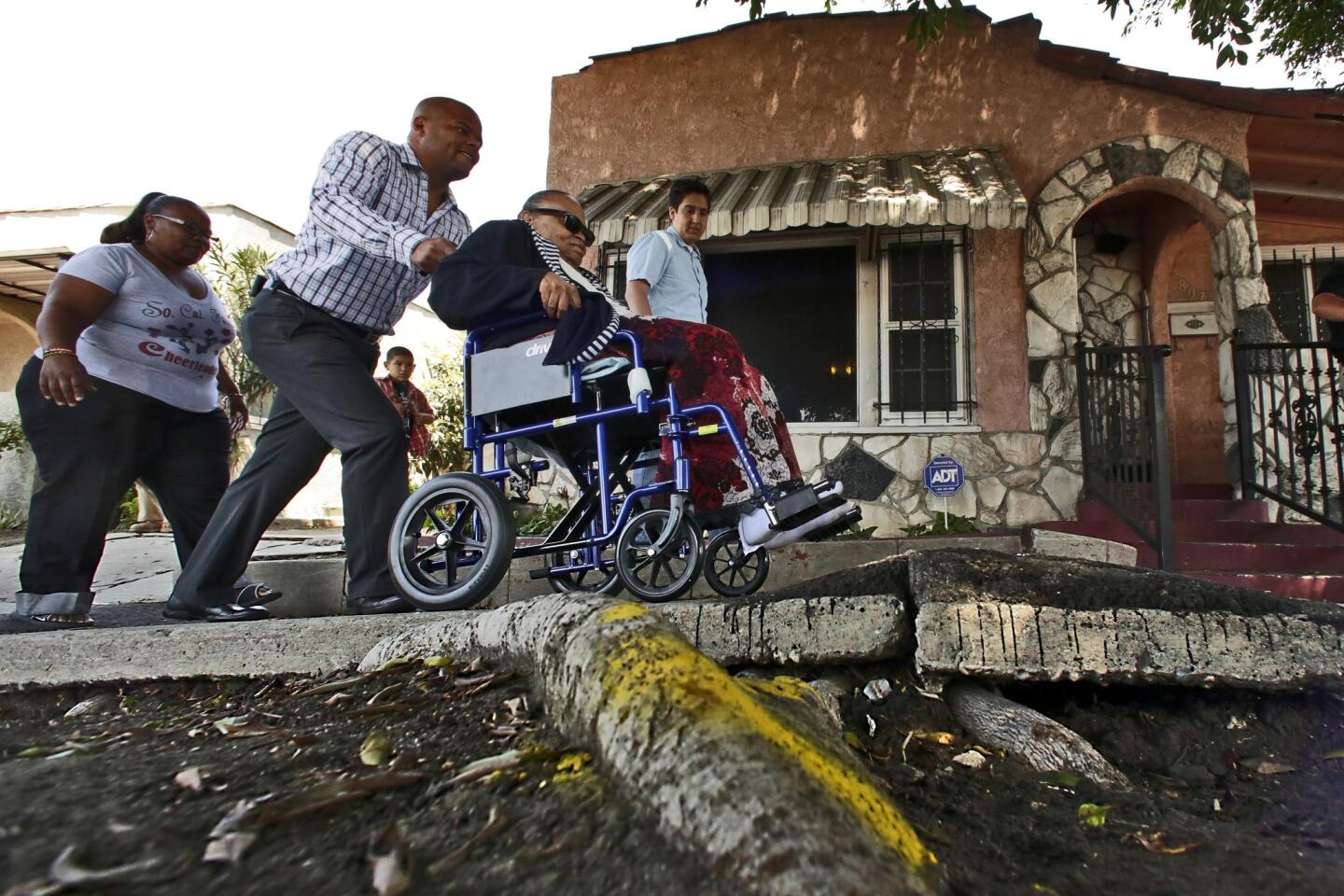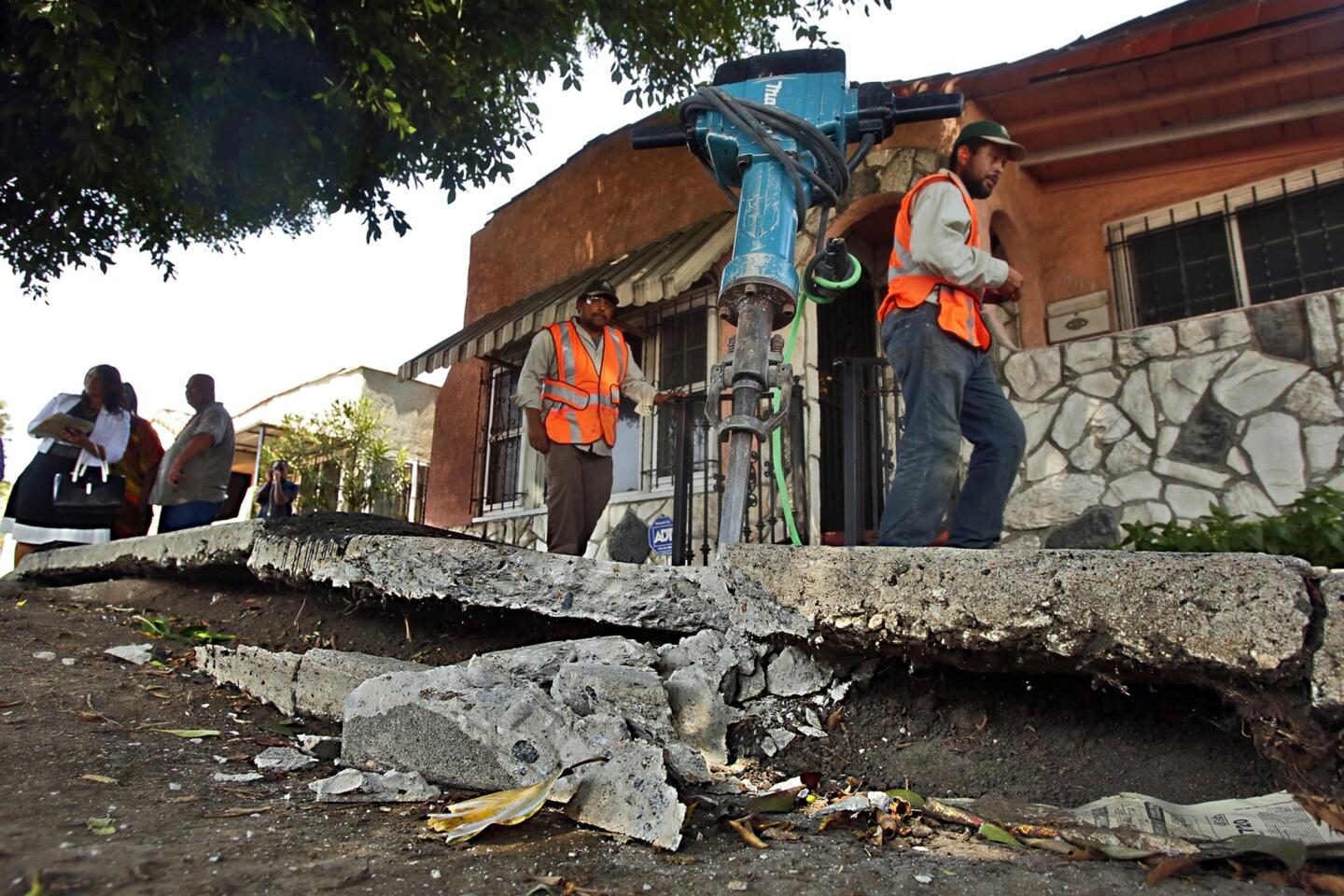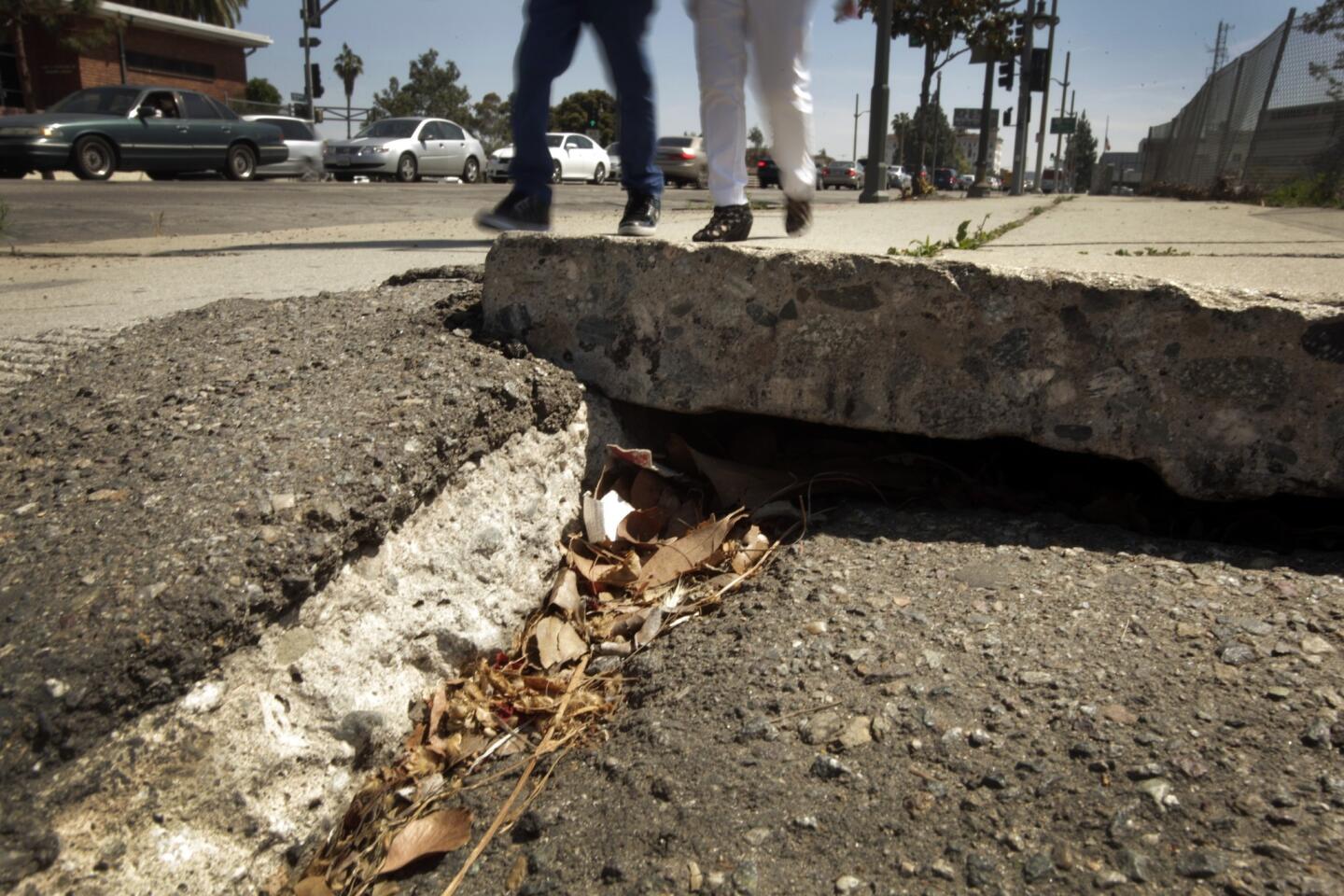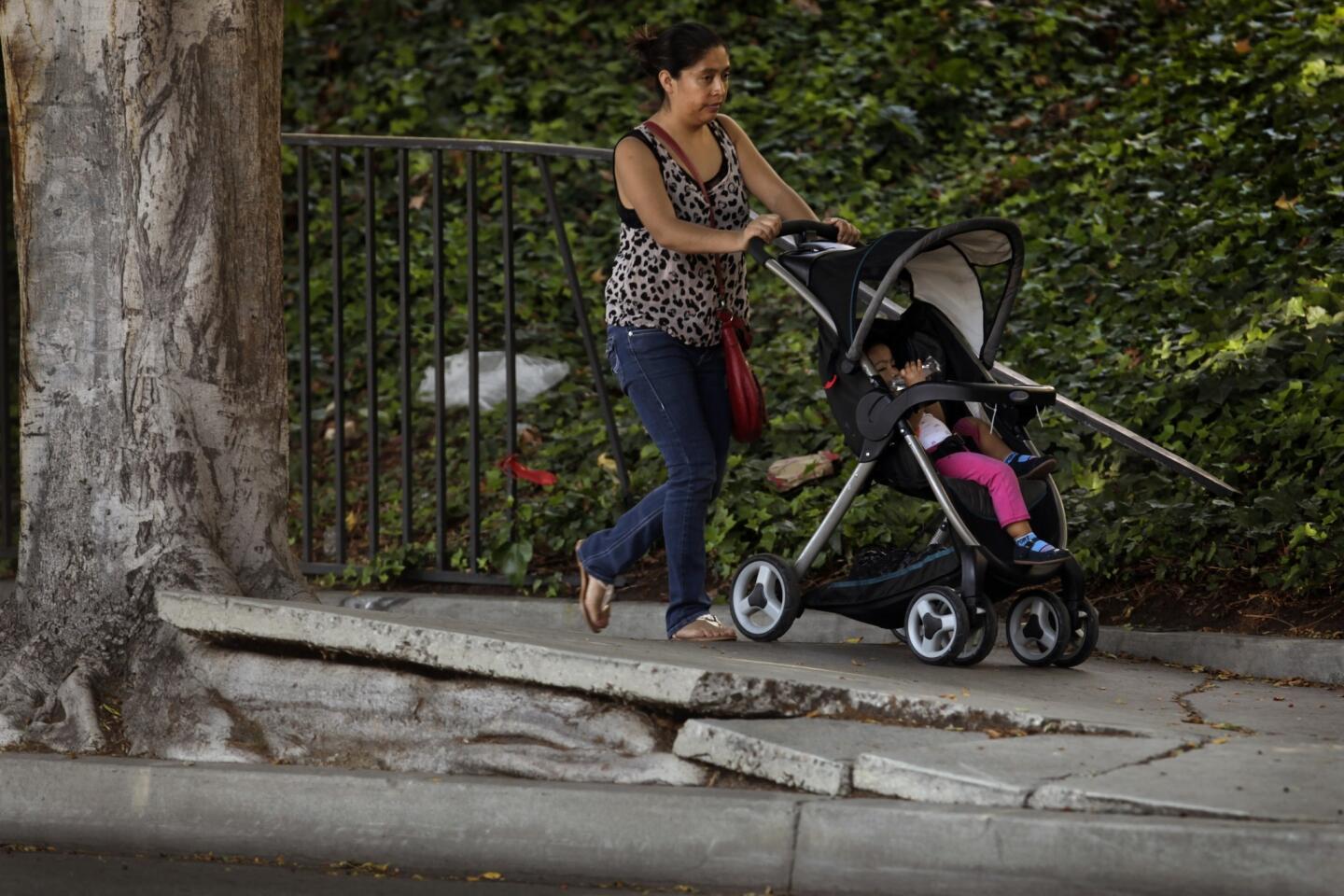Garcetti vows to fix sidewalks, but repair funds remain unspent
- Share via
When Mayor Eric Garcetti unveiled his first budget this week, he proudly announced that he was doubling funding to fix broken sidewalks from $10 million to $20 million.
There’s just one problem: None of the money that was budgeted for this year has been spent so far.
And it remains unclear how much of it will be used before the budget year comes to an end June 30. Any unencumbered money will be swept back into Los Angeles’ general fund.
City officials said they held off on sidewalk spending because of a lawsuit filed by disabled residents who assert that broken sidewalks infringe on their rights to public access. A plan to spend the $10 million on sidewalks next to libraries, parks and other city facilities is still awaiting approval from the City Council, which is on recess until next week.
Councilman Paul Krekorian said discussion of a possible settlement had delayed the council’s decision on how to spend the funds. A legal settlement could require the city to make certain repairs. The councilman said he wanted to avoid new sidewalk spending that might not be included as part of a settlement.
With buckling sidewalks becoming a symbol of diminished city services, critics both inside and outside City Hall are questioning why the city didn’t take more urgent action.
“They should have gotten this done,” said Stuart Waldman, president of the Valley Industry and Commerce Assn. The prospect of unspent money “going back in the general fund is ridiculous.”
Councilman Bernard C. Parks complained that as the city faced “an outpouring of requests to fix sidewalks,” it made little sense that the budgeted money might go unspent.
He also questioned whether Garcetti would truly be doubling the money for repairs. If unencumbered sidewalk money is rolled into the $20 million the mayor is proposing for next year, he said, “then it’s really not a double increase.”
Garcetti countered at a Monday news conference that he was “absolutely doubling” the repair money. Mayoral aides say that the $20 million would be the new floor for annual city spending on sidewalk repairs, not a onetime boost.
“What will be in this year’s budget is double last year’s — unequivocally,” Garcetti said.
The city has struggled to keep up with its cracking sidewalks for decades. Residents complain about waiting years for the city to make repairs. During the recession, the city found that it could no longer afford a program that required the city to split the costs evenly with property owners.
Budget officials are now proposing a sales tax increase that would fund $640 million in sidewalk repairs. But that money would only deal with Los Angeles’ worst sidewalks, the proposal states. The cost of doing all needed repairs remains unclear, according to a recent report by the city administrative officer and chief legislative analyst.
The Bureau of Street Services has estimated that about 40% of city sidewalks may need to be repaired or replaced — a number that is no surprise to Los Angeles pedestrians and skateboarders.
In East Hollywood, Danny Morales, 21, carried his skateboard in one hand as he walked south on Vermont Avenue on Tuesday afternoon. On his way to and from classes at Los Angeles City College, Morales usually skates down Vermont — until he reaches these broken blocks.
“All these cracks,” he said, pointing to large fractures in the sidewalk where plants have started to grow, “I’d rather walk all of this.”
A few blocks south on Vermont Avenue, Candi Hansen said her 7-year-old son A.J. had broken his toe from tripping on an uneven sidewalk. “It’s not safe for the pedestrians,” she said.
Earlier this year, city staffers recommended using the budgeted $10 million to fix sidewalks that fell into several categories, including heavily walked areas where lawsuits have been filed. Last week, however, a council committee approved an amended plan focusing on sidewalks next to city facilities. The spending still has to be approved by the entire council.
Krekorian said the committee held off on approving the spending amid settlement talks in the ongoing lawsuit that accuses the city of violating the Americans With Disabilities Act. Advocates for disabled residents contend that broken sidewalks make it impossible for them to get around the city. Krekorian said he couldn’t discuss in detail how the committee’s funding decisions are tied to the case because of continuing settlement negotiations.
The committee decided that repairing sidewalks alongside city facilities could be done the fastest, Krekorian said. City Administrative Officer Miguel Santana added that the city is clearly responsible for those sidewalks — an important distinction because the question of who should bear responsibility for repair costs is still being debated.
Some advocates were disappointed by the decision to focus first on fixing walkways near city facilities. As the city decides what to prioritize, the question should be, “Where are all the dangerous things and where are the most people walking?” said Deborah Murphy, executive director of the volunteer organization Los Angeles Walks.
Santana agreed that the city should establish a program to identify the worst sidewalks. But in the meantime, “because the public relies on those facilities for [public] services, ensuring accessibility for those facilities is a priority,” he said.
Bureau of Street Services Director Nazario Sauceda said it wasn’t clear yet how much work could be done before the end of June. Krekorian said he doubted that all the money could be spent.
Unencumbered money wouldn’t automatically be added to the $20 million planned by the mayor for sidewalk repairs next year. The council could, however, opt to use unencumbered funds to boost the sidewalk repair budget for next year — a move Councilman Curren Price said he would support.
Not spending that money on sidewalk repairs would be “a terrible result,” he said.
Times staff writers Soumya Karlamangla and David Zahniser contributed to this report.
More to Read
Sign up for Essential California
The most important California stories and recommendations in your inbox every morning.
You may occasionally receive promotional content from the Los Angeles Times.

















